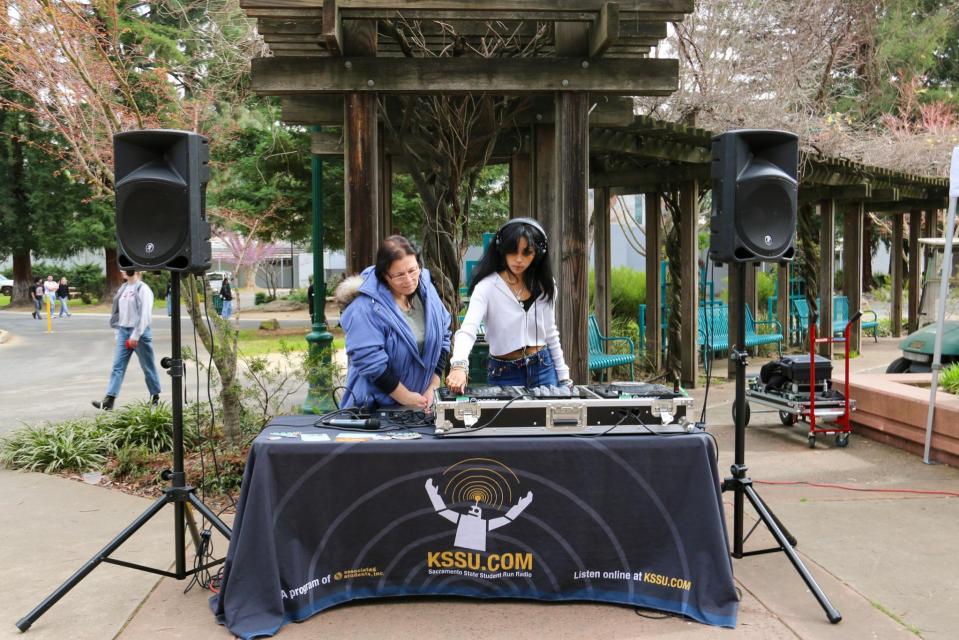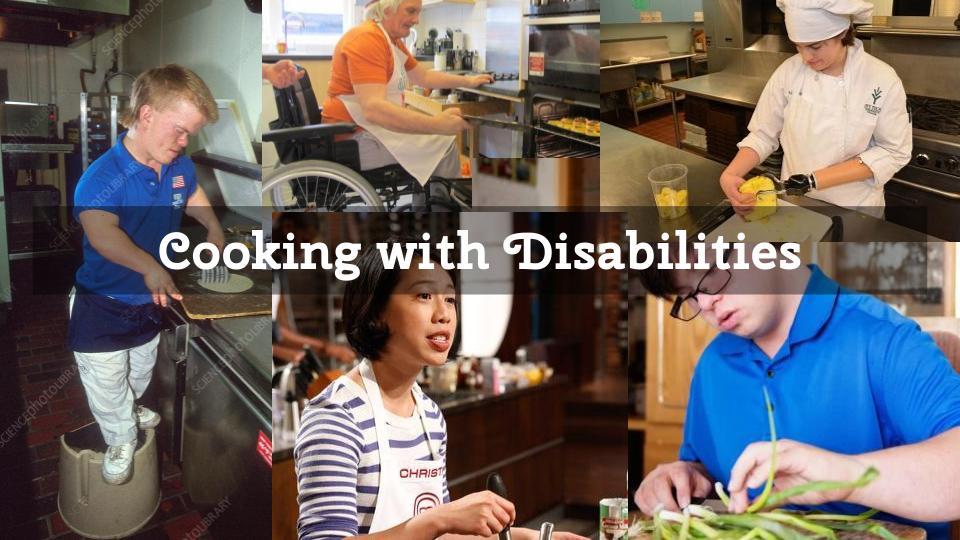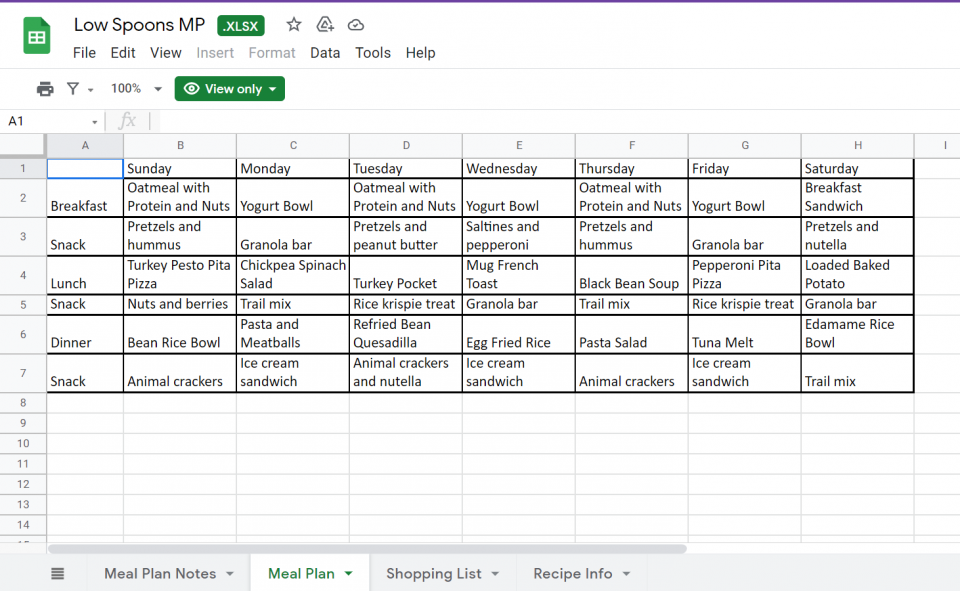Cooking with Disabilities (DANA)
Cooking with Disabilities involves adapting to your environment to the best of your ability. It could mean using a stool while at the stove or counter, using your table to cut veggies instead of the counter, using a portable oven or stove instead of a built-in one, using store-bought or homemade frozen foods, or even making food prep a group activity! The possibilities are endless.
Cooking is different for everyone living with disabilities, as we are an incredibly diverse group. There is no one way to be disabled, so there’s no one way to make cooking accessible.
Food Prep and Meal Planning
Food Prep and Meal Planning can help save time and energy later in the week and be something you work together on with roommates/family.
How do you meal plan?
- Make a list of things you often like to eat, sort by amount of energy it takes to make.
- Write down ingredients for each dish. This will be your shopping list at the beginning of the week.
- Cut up everything that needs to be cut up and pre-make as much as you can, then throw in a Tupperware and put it in the freezer or fridge for later. It will be easier to throw all your ingredients together when prepared beforehand.
- Write down what dishes you plan to make and attach them to days/times as you see fit. For example, if you need comfort on Wednesdays usually, you can put your favorite meal there.
TiP: When prepping ingredients for a meal, it’s often worth it to make sure you have everything measured/proportioned out as the recipe calls for it. This way you don’t need to pull your stock of ingredients out over and over again, and the process of making the food will go smoother.
Be sure to check out Premade low-spoons meal plan + recipes and shopping list to see an example of how one would do it. (Use the tabs at the bottom to navigate)
Mixing, Blending, and Cutting
Food processors, blenders, and stand mixers are all incredibly useful if you have the space/money for them. They save both time and energy.
If you don’t have them, then no worries! You can:
- Work at your own pace. There’s no shame in going slow when you’re cooking for yourself. The pumpkin cake I made took me a whole week.
- Try to pick recipes that minimize those methods
- Schedule cooking parties with friends. They can definitely help, and have fun with them.
Tips for cutting:
- If your disability is sight-related, use your hands to guide the knife, keeping your fingers curled so only your knuckles are exposed. Go slow if you’re new to this.
- If your disability is strength-related, see if you can put the cutting board on a lower surface so you can use your body weight to push the knife down. Otherwise, use a serrated knife and patiently saw it.
- If your disability involves knife phobias, see if you can snap or tear it apart with a fork or your hands.
Frozen Food
THERE IS NO SHAME IN RELYING ON FROZEN/MICROWAVE FOOD!!!
True, it may not have all the nutrients you need, but there are bags of frozen ingredients you can use to add to the frozen meal. For instance, Target sells bags of pre-chopped frozen broccoli and the Marketplace often carries bags of frozen peas and/or carrots. Gluten-free and dairy-free food options are becoming more and more common, so it’s worth looking into frozen food options for those dietary needs. As long as you have a decent variety and you’re getting enough of each food group your body needs, you’re good! No food is ever the “enemy”, everyone needs to eat.
Actually, there is a lot of variety and it will never become boring. You have to check out the Asian grocery stories for “restaurant-quality” meals.
A tip is to use ice cube trays, preferably something flexible like silicon. You can get it at Target, Walmart, or even Amazon. For example, you can put caramelized onions put into an ice tray to freeze, then you can pop out as many onion cubes as you need for the dish later. You could throw it into the pan before/early on in the cooking, or melt it in a microwave. It’s an easy way to add flavor/veggies if the dish is lacking it.
Lastly, the microwave is your best friend!
Using the Stove
You have to find a method that works for you. Examples include:
- Standing with a chair nearby to sit in between cooking stages
- Sitting on a chair with enough height
- Use the stove from your wheelchair by parking parallel to the stove
- Use a small portable stove and use it where you’re most comfortable
If your vision is limited, try to use your sense of smell and test the texture/hardness carefully with a utensil. Taste-testing is always a good option too! Just make sure to turn off the stove first so you don’t overcook the meal.
Working with an electric stove: Please be careful when touching these! The surface is smooth on a lot of modern stoves and you can very easily burn your hand if you put it on there without noticing it’s on. The placement of the knobs depends on the model. Some models also have buttons instead of knobs. Check it out before turning anything on.
Electric stoves are quieter than gas stoves and will show the temperature on or around the knobs. If you can’t tell how hot the stove is, you can check how hot the pan is after a minute or so of heating. You take a drop of water or oil (depending on what you’re cooking) and watch/listen for how quickly it sizzles, if at all.
Conclusion
These are our tips on cooking with disabilities. As you can tell cooking is different for everyone living with disabilities. There is no one way to be disabled, so there’s no one way to make cooking accessible.
Thanks for reading!!! Be sure to come to our next meeting on February 3rd at 6:30 PM via zoom.
This blog is a written version of DANA’s 5th Meeting in Fall 2021. You can check out the full recording with added material and discussion on DANA’s YouTube channel below. Stay connected with us by joining our Discord Server or following our Instagram at DANAatSacState.
DANA 5th Meeting: Cooking with Disabilities (10/29/2021)
Brian Thao is the host of Through our Lens with the Disabled and Nondisabled Alliance, a place where the officers and club members can talk unscripted.
Tune in to KSSU.com to hear shows hosted by Sac State students. Streaming 24/7 music, sports, talk shows, and more, there is something on KSSU for everyone. Interested in hosting your own radio show or podcast with our station? Click here to learn how to become a KSSU DJ.




